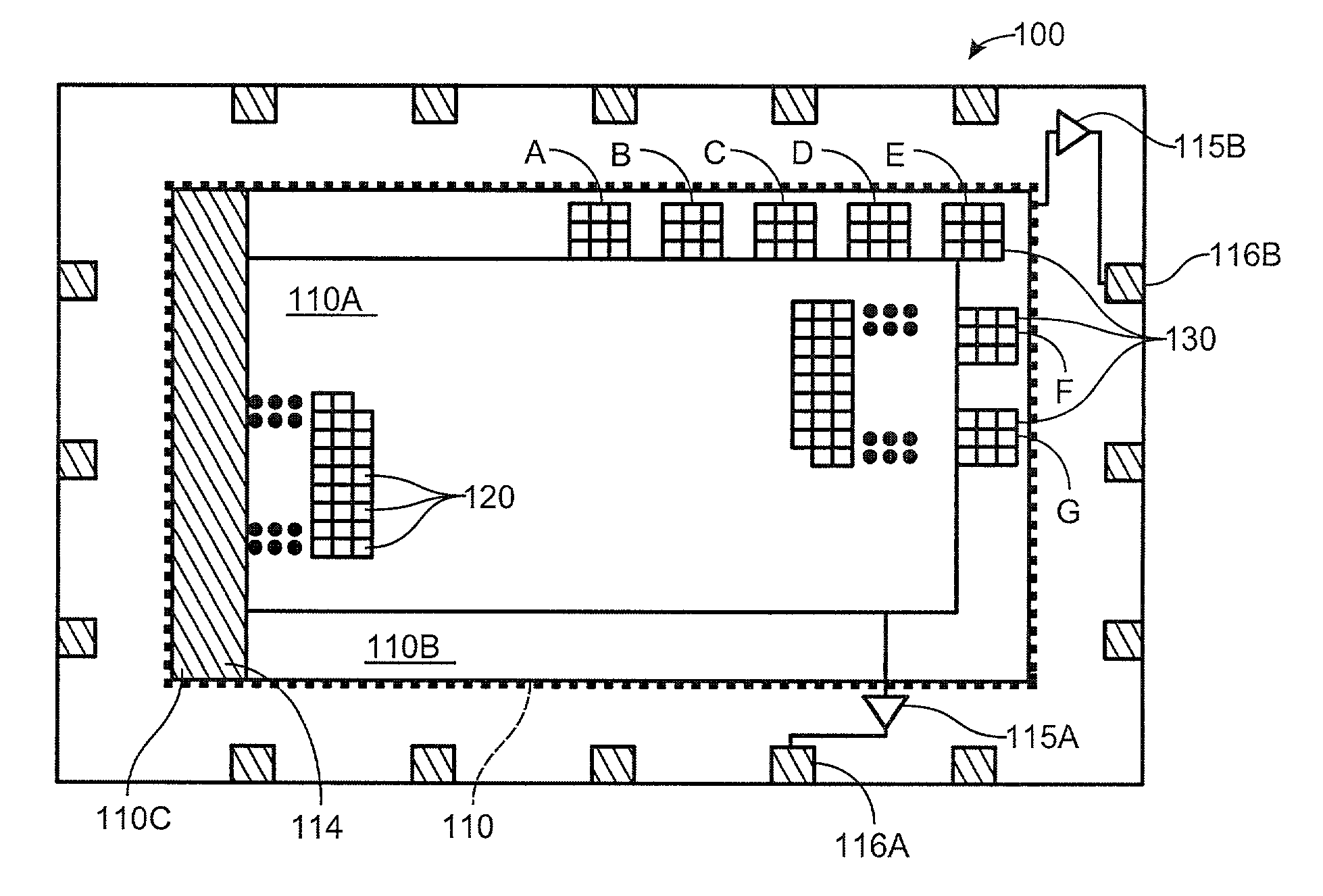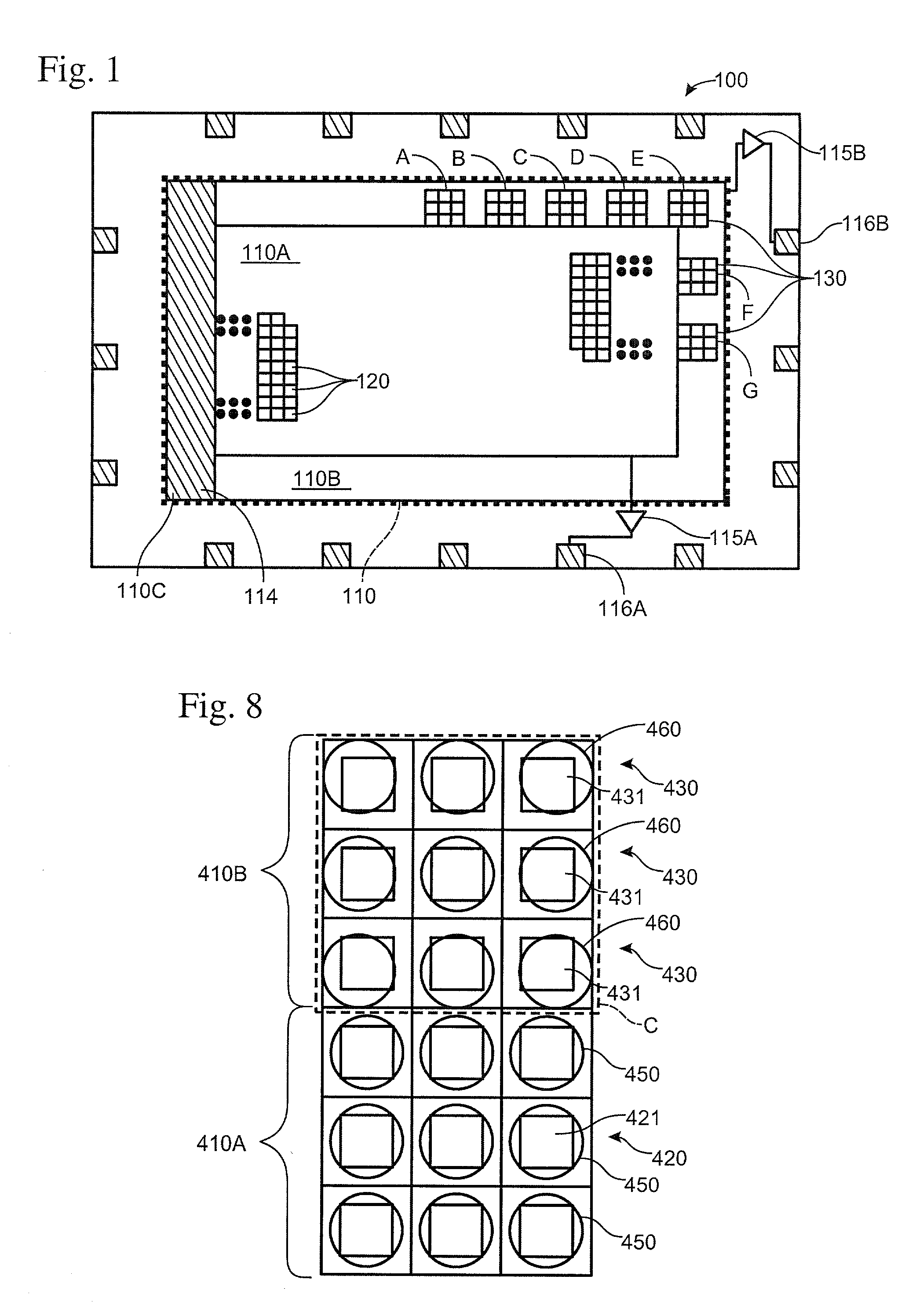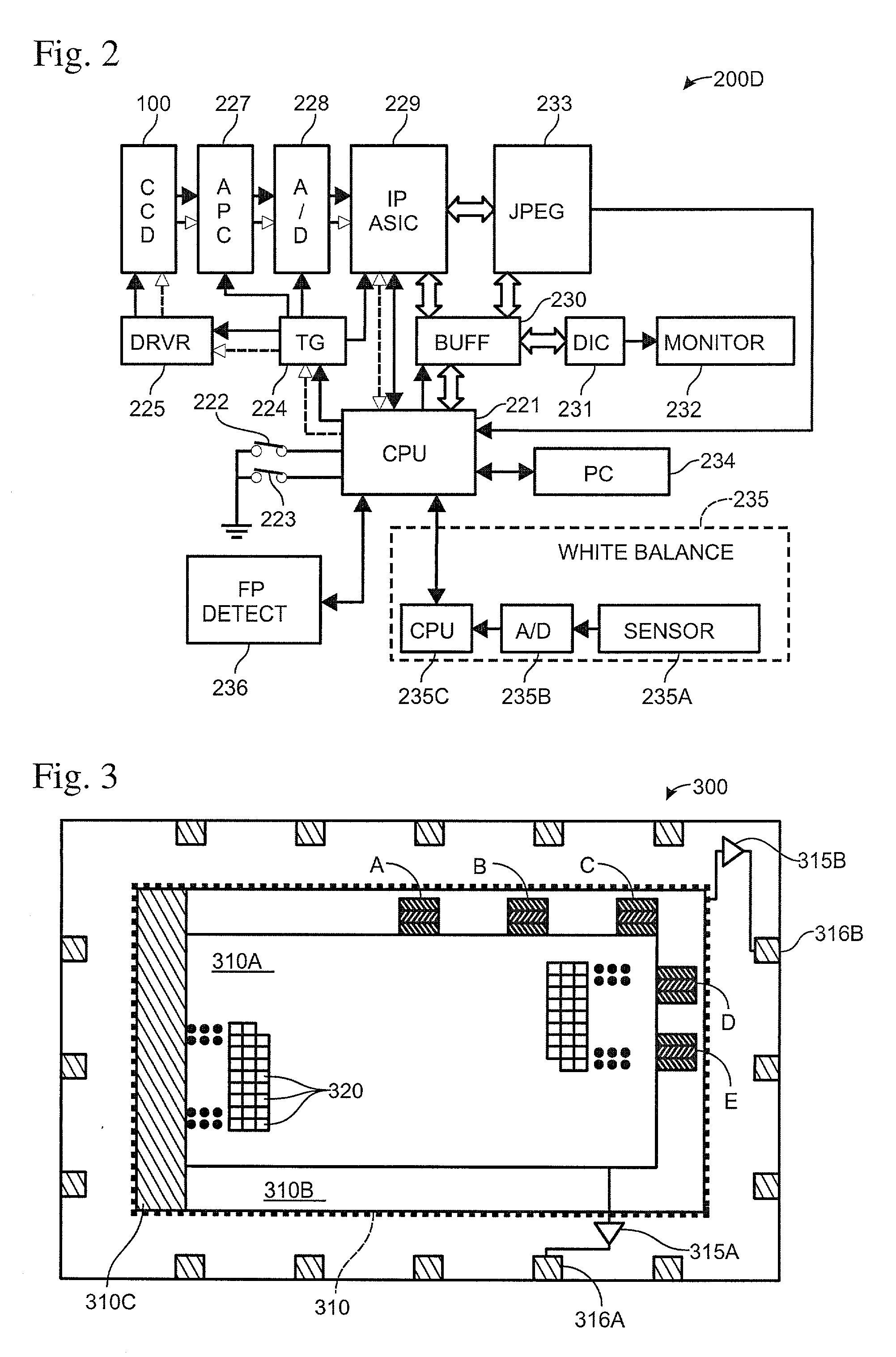Solid-state imaging device and electronic camera and shading compensation method
a technology of imaging device and electronic camera, which is applied in the direction of radio frequency controlled devices, printers, instruments, etc., can solve the problems of complex task of writing a correction table based on these correction values (multiplication factors) to a rom before shipping, and can occur in the preshipment of shading correction, etc., to achieve the effect of optimum illuminance profile, accurate correction value, and excellent cost performan
- Summary
- Abstract
- Description
- Claims
- Application Information
AI Technical Summary
Benefits of technology
Problems solved by technology
Method used
Image
Examples
first embodiment
[0056] FIG. 1 is a drawing showing the overall structure of a solid-state imaging device 100 in accordance with a first embodiment. The solid-state imaging device 100 has a light-receiving region 110 (in the drawing, indicated by a thick broken line) having a central part that is an effective pixel part 110A and an available pixel part 110B surrounding the effective pixel part 110A. "Available pixel (part)" is generally defined as a concept that includes "effective pixel (part)," but in this application, "available pixel part" is defined for convenience as the "light-receiving region" excluding the "effective pixel part."
[0057] Also, an optical black region 110C for measuring dark current is provided near the effective pixel part 110A (at the left side in FIG. 1). This optical black region 110C is formed of pixels (not shown in the drawing) with the same structure as those in the effective pixel part 10A, and the plane of incidence of photodiodes (photoelectric conversion elements) ...
second embodiment
[0080] FIGS. 3-6 illustrate as a second embodiment a solid-state imaging device 300 which differs from the first embodiment in that a light-shielding film 332 having apertures 332a is formed at the plane of incidence of pixels 330 in an available pixel part 310B.
[0081] As shown in FIG. 3, the light-receiving region 310 is divided into an effective pixel part 310A and an available pixel part 310B. An optical black region 310C for measuring dark current is provided at a location near the effective pixel part 310A (at the left side in FIG. 3). Also, output amps 315A and 315B and pad electrodes 316A and 316B are formed outside the periphery (in the drawing, indicated by a thick broken line) of the light-receiving region 310. Output amps 315A and 315B amplify the output signals (voltage) of each of pixels 320 and 330 in the effective pixel part 310A and available pixel part 310B, respectively, and pad electrodes 316A and 316B allow the output signals to be read.
[0082] The available pixel...
third embodiment
[0090] FIGS. 7-10 illustrate as a third embodiment a solid-state imaging device 400 which differs from the first embodiment in that microlenses 450 are disposed at the plane of incidence of pixels 420 in the effective pixel part 410A provided in the light-receiving region 410, and microlenses 460 are disposed at the plane of incidence of pixels 430 in the available pixel part 410B.
[0091] As shown in FIG. 7, the light-receiving region 410 of solid-state imaging device 400 is divided into an effective pixel part 410A and an available pixel part 410B. An optical black region 410C for measuring dark current is provided at the left side of the effective pixel part 410A in FIG. 7.
[0092] Also, output amps 415A and 415B and pad electrodes 416A and 416B are formed outside the periphery (in the drawing, indicated by a thick broken line) of the light-receiving region 410. Output amps 415A and 415B amplify the output signals (voltage) of each of pixels 420 and 430 in the effective pixel part 41...
PUM
 Login to View More
Login to View More Abstract
Description
Claims
Application Information
 Login to View More
Login to View More - R&D
- Intellectual Property
- Life Sciences
- Materials
- Tech Scout
- Unparalleled Data Quality
- Higher Quality Content
- 60% Fewer Hallucinations
Browse by: Latest US Patents, China's latest patents, Technical Efficacy Thesaurus, Application Domain, Technology Topic, Popular Technical Reports.
© 2025 PatSnap. All rights reserved.Legal|Privacy policy|Modern Slavery Act Transparency Statement|Sitemap|About US| Contact US: help@patsnap.com



